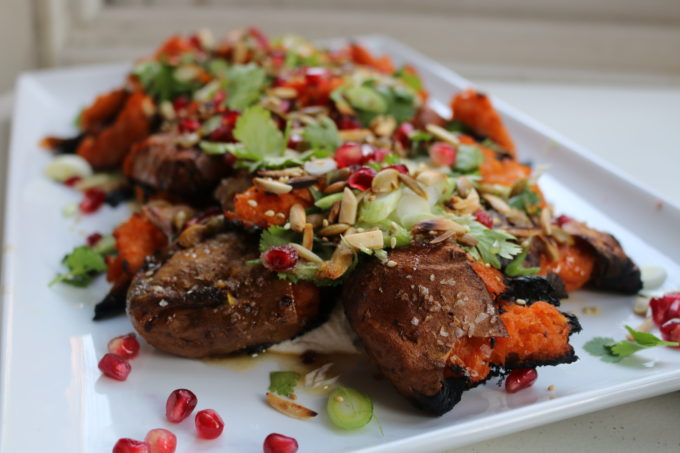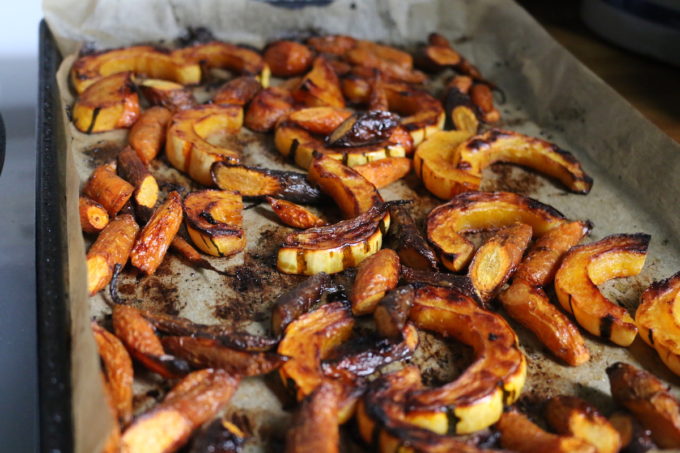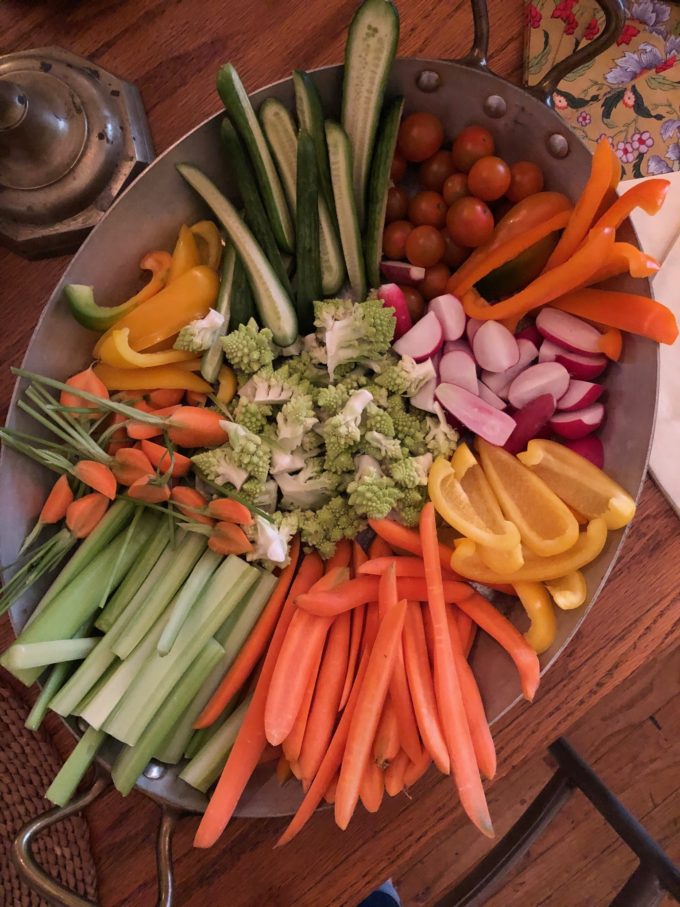Now that the weather is a bit cooler, slow roasting vegetables is my ideal type of weekend prep – a couple of sheet trays loaded with barely prepped produce, an oven set to a low temperature and a long cooking time that leaves little room for error or need for attention. Slow roasted vegetables are luxurious in texture and intense in flavor. Almost all vegetables can be cooked this way (though maybe not the potato family) and can be used in a multitude of dishes. I’m sharing how I used four of them below.
Continue reading “SLOW ROASTED VEGETABLES AND HOW TO USE THEM”
TWICE BAKED SWEET POTATOES WITH TAHINI YOGURT AND POMEGRANATE

There is a lot of inspiration behind this dish. This picture on Sprouted Kitchen’s Instagram sent me on a hunt for Bon App’s method of twice baking these crispy, irregular shaped potatoes. Rather than pairing the butter/honey/cider vinegar bathed beauties with coconut yogurt and harissa like Sprouted Kitchen, I piled them on a generous bed of tahini yogurt and finished them off with a mix of herbs, nuts and seeds. I’ve made this dish countless times, a rare testament to how good it is. The recipe is long but not nearly as hard as it looks.
Continue reading “TWICE BAKED SWEET POTATOES WITH TAHINI YOGURT AND POMEGRANATE”
WHAT WE EAT VEGETABLE ROASTING TIPS + ROASTED MARKET VEGETABLES WITH BROWNED BUTTER PEPITAS AND CORIANDER

Not to boast but the What We Eat team is darn good at making vegetables irresistible. To keep people coming back for more, we consider the following:
PLANT-BASED EXPLAINED

Guest post by Caroline Markowitz – MS candidate in nutrition and exercise physiology at Columbia University
Whether from the film Game Changers (I won’t even go into this) or the environmental movement, the term “plant-based diet” has been frequently thrown around. And it is often used inaccurately. The term “plant-based” is vague and can lead to confusion. However, its meaning is simple: a diet based on plants.
ORGANIC, CONVENTIONAL, LOCAL – WHAT TO CHOOSE?

Guest post by Caroline Markowitz – MS candidate in nutrition and exercise physiology at Columbia University
Grocery stores and farmers markets display signs touting “organic” and “local” above their produce. But so many of us feel fraught with confusion. Is eating organic always better? What if something is local but not organic, what should I choose? What does it all mean? The questions feel never ending. In a recent NYTimes “Climate Fwd” newsletter, Eduardo Garcia and Lisa Friedman explain that organic farming can have an equal (if not greater) carbon footprint than conventional farming; however, organic farming is likely better for the planet overall because it does not use synthetic herbicides and pesticides that conventional farming relies on.
Conventional agriculture: “a broad term that has a number of definitions, but a crop can be classified as conventional if synthetic chemicals are used to maintain the plants. A significant amount of chemical and energy input is required in conventional agriculture to produce the highest possible yield of crops.”
Organic agriculture: “Organic farmers, ranchers, and food processors use agricultural methods intended to preserve the environment. USDA organic regulations restrict the use of certain conventional tools such as synthetic fertilizers and pesticides.”
Local farming: “Local farming means short distribution channels – channels involving no more than one intermediary between farm and consumer. Local farming is aimed at, among other things, reducing the distances travelled by fruits and at reestablishing the relationship between consumer and farmer.”
Continue reading “ORGANIC, CONVENTIONAL, LOCAL – WHAT TO CHOOSE?”
